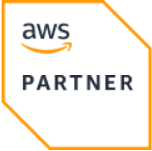Comparing Massdriver and Port
Which Infrastructure Automation Tool is Right for You?
Port is an internal developer portal that helps organizations organize software catalogs and expose DevOps workflows to developers through customizable UI forms. It gives platform teams a way to centralize access to services like "spin up a staging environment" or "create a microservice repo." However, Port doesn't actually create infrastructure — it relies on you to build and maintain automation behind the scenes (CI pipelines, Terraform, scripts, etc.).
Massdriver takes a more integrated approach. It combines real Infrastructure-as-Code with a visual interface where developers can design, deploy, and manage infrastructure themselves, no YAML or Terraform needed. Platform teams publish approved modules, and developers connect those into working cloud environments via a drag-and-drop diagram.
Key Differences
-
Infrastructure provisioning
Port acts as a frontend, it triggers automation that you build. If a developer requests a database, Port sends the request to your Terraform pipeline (or GitHub Action) to execute. Massdriver is the automation. It provisions infrastructure directly using bundled IaC modules, so developers get fast, safe deployments, no glue code required. -
Developer experience
Port provides a catalog and input forms. It's helpful, but the experience can feel abstract. It doesn't show the full architecture or the relationships between components. Massdriver uses live diagrams that serve as both design and deployment. Developers see the infrastructure they're building in real time, with metrics, costs, and connections displayed in context. -
Guardrails
Port allows teams to enforce governance through input validation, RBAC, and approval workflows. But the actual compliance depends on what's happening in the backend automation. Massdriver builds compliance into the infrastructure modules themselves. Guardrails like IAM roles, cost caps, and encryption defaults are enforced automatically through schema constraints and built-in policies. -
Setup effort
Port is powerful and flexible, but it requires your team to wire up everything. CI jobs, webhook listeners, state tracking, etc. Massdriver is more turnkey. Once your team publishes a module, everything else, from state management to access control to cost tracking, is handled for you.
| Feature | Massdriver | Port |
|---|---|---|
| Infrastructure Provisioning | Supports any IaC + interoperability (OpenTofu / Terraform, Helm, Bicep) | Triggers your automation (you write the pipelines) |
| Developer Experience | Diagram-based UI + IaC-driven input widgets (semver, immutability, smart dropdowns) | Form-based workflows for predefined actions |
| Self-Service | Developers diagram infra; deployment and compliance workflows run automatically | Developers can request infra via portal actions |
| Guardrails | Proactive validation + BYO compliance tooling | Input controls, RBAC, optional approval flows |
| Environment Management | One-click env blueprints with PR-based preview support. | TTLs and resource visibility via catalog |
| Setup Effort | Minimal — one CLI to publish IaC and policies; workflows live with the IaC modules, minimizing and centralizing maintenance | High — must integrate automation and maintain it |
Bottom Line
Port helps you expose DevOps tasks to developers through a clean portal. Massdriver eliminates the tasks altogether, delivering fully managed, policy-compliant infrastructure through a visual interface your whole team can use.

